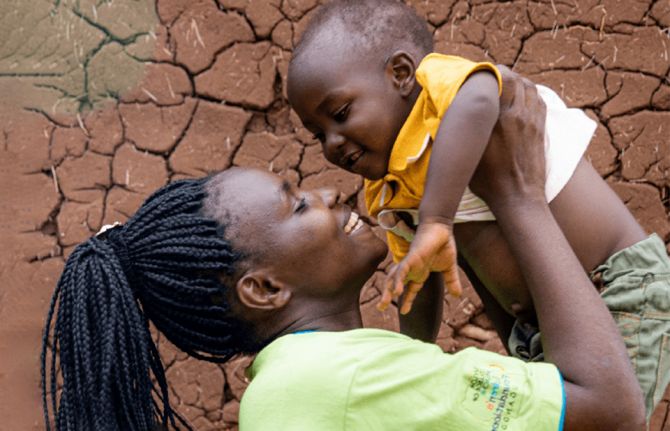
Feature Story
Better HIV diagnosis in mothers and infants to avoid death from TB vaccine
03 July 2009
03 July 2009 03 July 2009
18 month old baby in Baragwanath Hospital, Soweto, South Africa
Credit: UNAIDS/L. Gubb
Bacille Calmette-Guérin, or BCG, is one of the most widely given vaccines globally and is safe in people with healthy immune systems. WHO recently published further research on the finding that this standard tuberculosis vaccine has a higher risk of causing death in babies living with HIV.
Given the severity of these risks, WHO recommends not vaccinating babies with HIV and delaying vaccination for those whose HIV status is unknown but who have signs or symptoms consistent with HIV infection.
This recommendation came in 2007 and poses several challenges to weak health systems around the world.
This paper gives better information on the risk of generalized BCG infection in HIV infected children and strongly reinforces the need to find better ways to prevent TB in infants (who are most at risk of dying from TB) and for diagnosing HIV in infants.
Dr Alasdair Reid, UNAIDS TB Adviser
It underscores the need for more widespread testing of HIV in babies and pregnant mothers. Clinical symptoms of HIV infection typically occur after 3 months of age but in some countries babies are routinely vaccinated with BCG at birth.
UNAIDS calls for scaling up access to and use of quality services for the prevention of mother-to-child transmission as well as integrated delivery of services for HIV and tuberculosis.
“A selective BCG vaccination policy in HIV-exposed infants will require high uptake of maternal HIV testing, strengthened prevention of mother-to-child transmission services, and better integration of TB and HIV programmes,” said Dr Catherine Hankins, UNAIDS Chief Scientific Adviser in HIV this Week scientific blog.
The results of a three-year study in South Africa were published in the July edition of the journal Bulletin of the WHO. They confirm earlier research which led WHO in 2007 to change BCG vaccination policy for babies. The WHO Global Advisory Committee on Vaccine Safety and the Strategic Advisory Group of Experts TB and HIV experts then published Revised BCG vaccination guidelines for infants at risk for HIV infection.
“This paper gives better information on the risk of generalized BCG infection in HIV infected children and strongly reinforces the need to find better ways to prevent TB in infants (who are most at risk of dying from TB) and for diagnosing HIV in infants,” said Dr Alasdair Reid, UNAIDS TB Adviser.
Four scenarios, outlined by WHO, that affect the balance of risks and benefits of BCG vaccination in settings with high burdens of tuberculosis and HIV infection
1. Infants born to women of unknown HIV status
The benefits of BCG vaccination outweigh the risks, and infants should be vaccinated.
2. Infants whose HIV infection status is unknown and who demonstrate no sign or symptom of HIV infection, but who are born to women known to be HIV-infected
The benefits of BCG vaccination usually outweigh the risks, and infants should receive the vaccine after consideration of local factors.
3. Infants who are known to be HIV-infected, with or without signs or symptoms of HIV infection
The risks of BCG vaccination outweigh the benefits and infants should not receive the vaccine, but they should receive other routine vaccines.
4. Infants with unknown HIV infection status but who have signs or symptoms of HIV infection and were born to HIV-infected mothers
The risks of BCG vaccination usually outweigh the benefits, and children should not be vaccinated during the first few weeks of life, since clinical symptoms of HIV infection typically occur after 3 months of age. However, the vaccine can be given if HIV infection is ruled out by early virological testing.
See Revised BCG vaccination guidelines for infants at risk for HIV infection, 2007.
Better HIV diagnosis in mothers and infants to av
Cosponsors:
Publications:
Revised BCG vaccination guidelines for infants at risk for HIV infection. Wkly Epidemiol Rec 2007; 82: 193-6 pmid: 17526121
Disseminated bacille Calmette–Guérin disease in HIV-infected South African infants. Bulletin of the World Health Organization (BLT) Volume 87, Number 7, July 2009, 485-564


